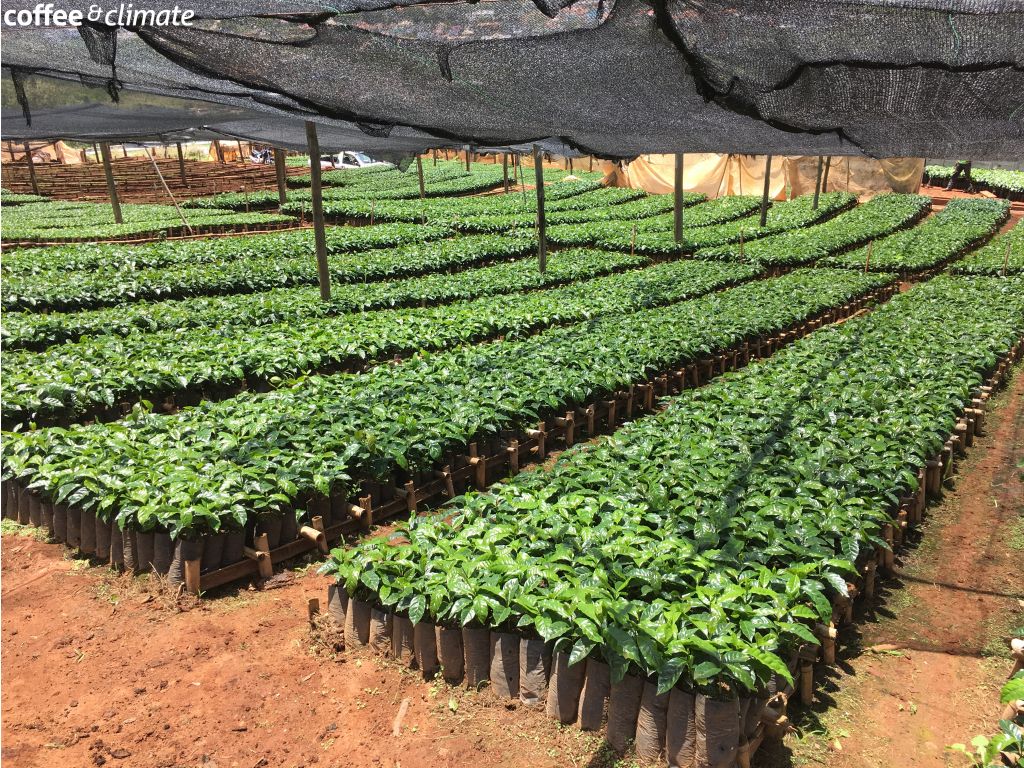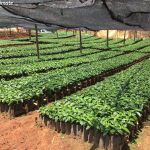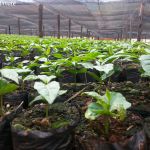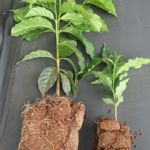Deeper Polybags
Polybags, used to grow seedlings for 6+ months prior to planting out, vary in size but are rarely more than 20 cm deep. In conditions where rain is scarce or unreliable, using polybags that are 25 cm deep has resulted in seedlings with more developed root systems that are better able to survive an extreme drought event once planted in the field.
Status: operational in Colombia and Brazil though not widely used because of higher costs.

Concept
Extended droughts will cause loss of coffee yields due to reduced sap flow. Recently planted trees (newly planted shade trees as well) are especially susceptible and losses through tree death can be heavy in unexpectedly long droughts, such as happened in the 2015 El Niño in several countries. To give coffee saplings a better start on transplanting to the field: coffee saplings in deeper bags will have a deeper root system to survive unexpected droughts. This tool also gives farmers more latitude on when to plant out, since they could stay longer in the nursery without root damage. The size of polybags for nursery seedlings varies from country to country; in some places (e.g. Uganda, Kenya) the size of bags is very small, perhaps a legacy of times when conditions were wetter. Cenicafé (Colombia) has carried out trials with deeper polybags than normally used with good results. Smaller bags may not allow sufficiently deep roots to give the best chance of establishment. Deeper bags will encourage deeper roots, especially if watered from below during the nursery stage. Although this requires extra materials and work, the extra effort may well be worth it to give the coffee tree a better chance of good establishment – especially when more expensive new varieties are being introduced.
Drawbacks
- Longer lead time. The seedlings stay up to 5 – 6 months longer in the nursery as the roots grow deeper.
- Higher costs of preparing the greater volume of soil and compost bag mix as well as extra costs of transporting the heavier saplings to the field.
Costs
In Brazil, the production cost of seedlings in deeper polybags is R$ 0,80 per seedling and the commercial price is R$ 1,30 per seedling, while the conventional seedling has a production cost of R$ 0,25 and a commercial price of R$ 0,45. Because they are larger, seedlings in deeper polybags also drive up transport costs. An average truck can hold 4,500 regular seedlings, but only 2,000 seedlings in deeper polybags. In Brazil, the average cost of one trip from the nursery to the farm in the same municipality is R$ 100.
Recommended Activities
- Test out deeper polybags in your context. Field station trials and on-farm participatory trials with deeper polybags can be conducted to evaluate survival rates and effects on subsequent growth characteristics of the plants, including root development before and after transference to the field. This would include ways to encourage axial root growth by bottom watering.
- Combine with other techniques. If funds are available, you could simultaneously study a range of temporary shading and ground covers.
Further Activities
- Already tried and recommended in Colombia and Brazil.
- May be especially useful where vegetative rather than seed propagation is used, since root systems may be initially weaker.
- Should be used in conjunction with other soil protection tools, especially a thick mulch layer and temporary shade where mature shade is sparse.
- Data available on farmer adoption suggests quite low rates of adoption at present.
- Nursery owners are not willing to produce this type of seedling due the higher production cost and occupying area within the nursery.
- Have something to add to this tool description? Leave a comment!
- Interested in applying this tool? Look for pictures, case studies and info sheets below for step-by-step instructions to get you started.



Leave a comment
0 comments